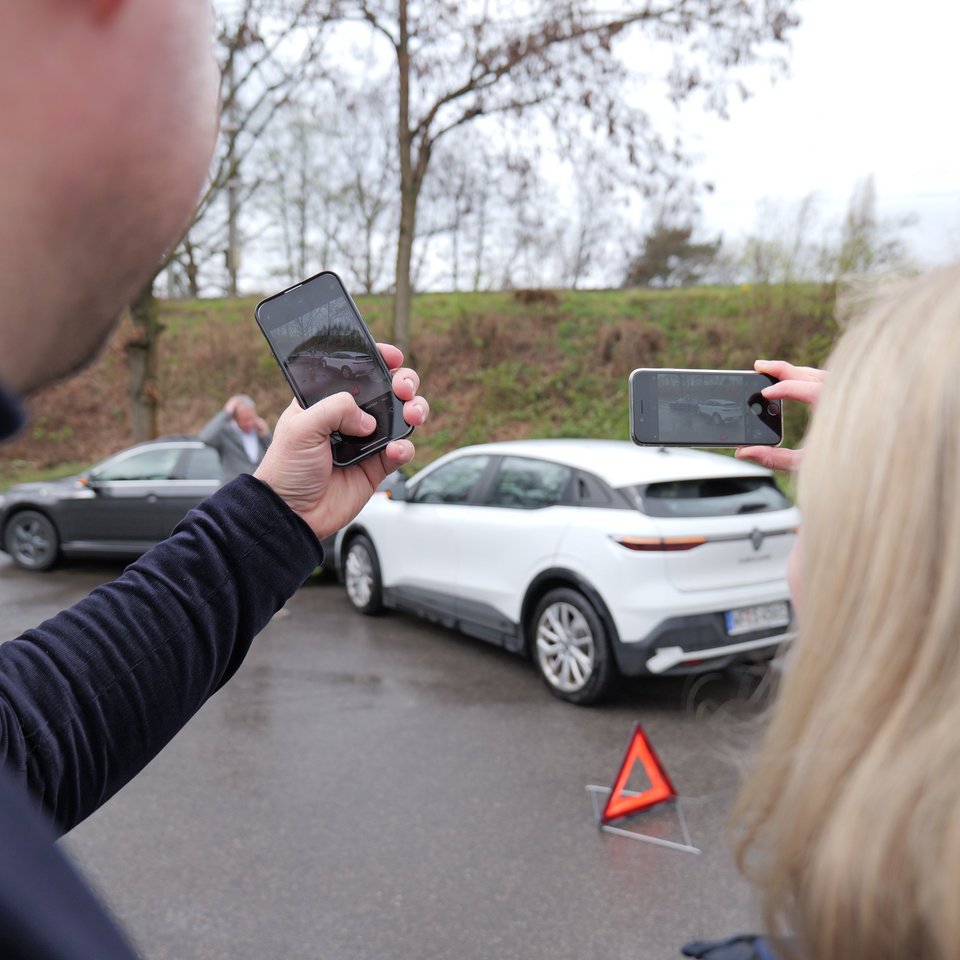Are you allowed to watch rescue work?
Mobility: Die Beweggründe von Schaulustigen sind verschieden. Deshalb wollen Fachleute das Zuschauen nicht pauschal verurteilen.

Mobility: Die Beweggründe von Schaulustigen sind verschieden. Deshalb wollen Fachleute das Zuschauen nicht pauschal verurteilen.


An accident on the highway, the emergency services are already on the scene. Many passers-by slow down before they pass the scene of the accident - a sensible precaution if their own direction of travel is affected. But many also slow down on the oncoming lane: According to US data, more than one in ten accidents on the freeway results in traffic backing up in the opposite direction. “Traffic jam because of rubberneckers” is the colloquial term used in the traffic news. The pejorative expression is based on the assumption that people slow down to take a closer look at the scene of an accident in order to satisfy their thirst for sensation. But some drivers may slow down in fright or out of caution because they are afraid that debris may have fallen into their lane.
“It has always been vital for people to pay attention to an accident and understand what has happened,” explains Ralf Buchstaller from the Medical-Psychological Institute of TÜV NORD in Hamburg. “That's why we instinctively look when an accident happens near us.” However, it often doesn't stop at a quick glance. Unfortunately, onlookers are no exception at accident scenes, as the Federal Highway Research Institute reported before the turn of the millennium. In 2017, the police in North Rhine-Westphalia even investigated 92 onlookers after a serious accident on the A3. “Gawking” is an administrative offense. If onlookers gather at an accident and do not drive on, even though the emergency services repeatedly ask them to do so, a fine of 20 to 1000 euros is due. In some federal states, such as Lower Saxony, this can even amount to 5000 euros. However, many people make themselves liable to prosecution by not providing first aid, obstructing the emergency services or filming or photographing accident victims. A fine or a prison sentence of up to two years can be imposed for making a recording that “shows the helplessness of another person” (Section 201a StGB) - even if the recording has not been sent or published. Nevertheless, such behavior is unfortunately widespread. There is a strong urge to document and share traumatic events, explain Swedish media researchers Linus Anderson and Ebba Sundin in an article in which they look at the phenomenon from different angles. On the one hand, filming or photographing the injured and dead is even more unethical than simply looking at them, as it violates their rights and turns them into objects. On the other hand, mobile documentation is now a form of communication and has become a habit for many people. Filming or photographing onlookers could certainly empathize and behave accordingly in the digital media age.
Educator and emergency paramedic Harald Karutz, Professor of Crisis Management at the Medical School Hamburg, goes one step further. He does not want to refer to onlookers at accident scenes as “rubberneckers” or “onlookers”, as this does not do justice to the complexity of the phenomenon. Looking at an accident is initially an instinctive orientation reaction. But even those who stand still for longer may have reasons other than sensationalism. For example, there are people who follow the rescue work out of compassion or to calm themselves down in this way. Karutz therefore calls for understanding and appeals to the emergency services to accept pure spectatorship - but only as long as certain rules are observed. These include: spectators must not obstruct or disturb the emergency services, must respect barriers, instructions and the rights of the victims and keep a minimum distance.
Ralf Buchstaller from TÜV Nord also sees limits to understanding. “Road safety and rescue work always have priority,” he says. He believes that looking at dead and injured people up close is rightly against the law - and that the motives of the onlookers are of secondary importance. “The decisive factor is how it feels for the victims to suffer through the worst moments of their lives while being stared at by strangers. In this situation, the public's interest in information must take a back seat.”
Founded over 150 years ago, we stand for security and trust worldwide. As a knowledge company, we have our sights firmly set on the digital future. Whether engineers, IT security experts or specialists for the mobility of the future: in more than 100 countries, we ensure that our customers become even more successful in the networked world.